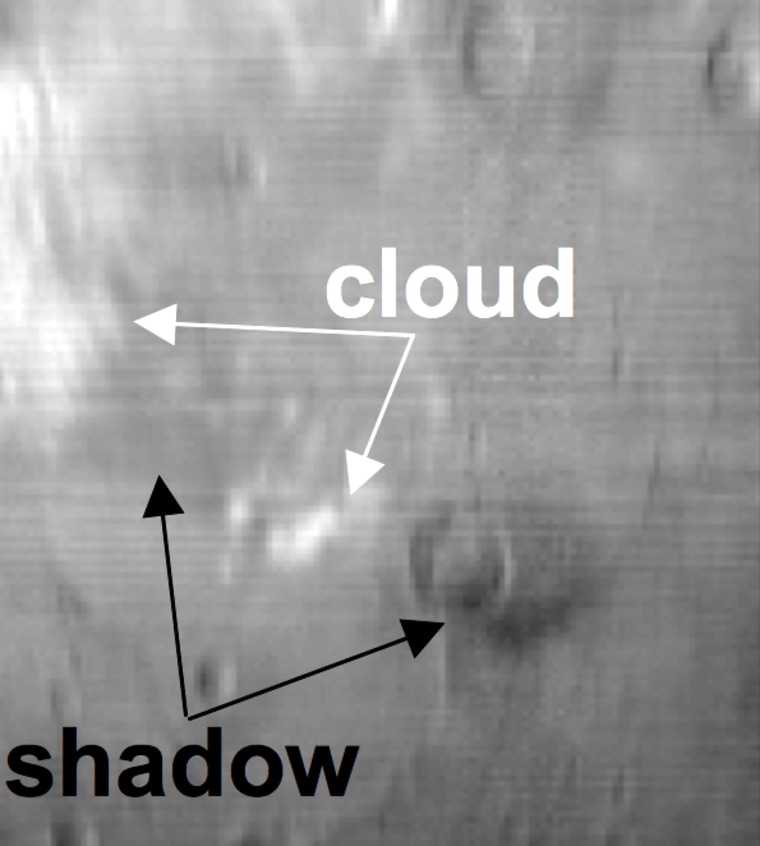With its thin atmosphere and scant moisture, Mars is often largely cloud-free. But new observations reveal clouds of dry ice thick enough to cast significant shadows on the Red Planet.
Dust storms are known to shroud vast swaths of Mars. Clouds have been photographed from the ground before, too.
The new research finds that carbon dioxide, the main component of Martian air, freezes into clouds so dense they dim the sun by about 40 percent. Frozen carbon dioxide is commonly called dry ice here on Earth.
"This is the first time that carbon dioxide ice clouds on Mars have been imaged and identified from above," said Franck Montmessin of the Service d'Aeronomie, University of Versailles and lead author of a paper in the Journal of Geophysical Research. "This is important because the images tell us not only about their shape, but also their size and density."
Until now, only indirect information suggested what these clouds were made of. The new observations were made by the European Space Agency's orbiting Mars Express.
The carbon-dioxide clouds are surprisingly high, some 50 miles, and are several hundred miles wide. They're thicker than expected, according to Montmessin's team.
Another surprise: the clouds are made of particles that are larger than expected. The particles are more than a micron wide (one-thousandth of a millimeter). Normally, particles of this size would not be expected to form in the upper atmosphere or to stay aloft for very long before falling back toward the surface.
The clouds "cast quite a dense shadow and this has a noticeable effect on the local ground temperature," Montmessin said. "Temperatures in the shadow can be up to 10 degrees Celsius [50 degrees Fahrenheit] cooler than their surroundings, and this in turn modifies the local weather, particularly the winds."
These clouds were found mostly near the equator. The researchers figure they're the result of extreme variations in daily temperature that occur near the equator.
"The cold temperatures at night and relatively high day-time temperatures cause large diurnal waves in the atmosphere," Montmessin explained. "This means there is a potential for large-scale convection, particularly as the morning sun warms the ground."
Convection — warm air rising — is at the root of Earth's weather, too.
On Mars, bubbles of warm gas rise. At altitude, the carbon dioxide condenses, the researchers explained. This releases heat, causing the gas and ice particles to rise higher.
On Earth, water vapor condenses around tiny particles, often dust or salt, to form clouds. It's not yet clear what the Martian moisture is condensing around. The researcher said it could be dust, micrometeorites or tiny crystals of water ice.
